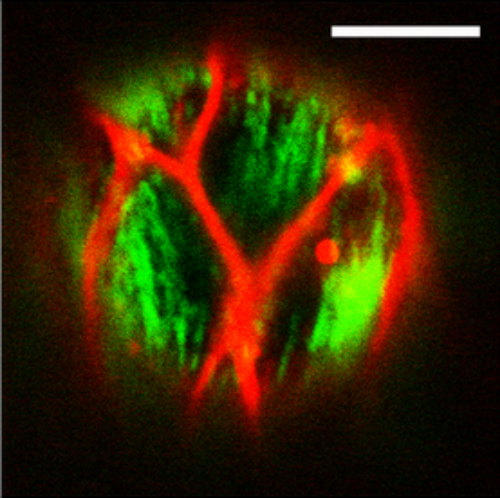Epithelial rotation is preceded by planar symmetry breaking of actomyosin and protects epithelial tissue from cell deformations.
Symmetry breaking is involved in many developmental processes that form bodies and organs. One of them is the epithelial rotation of developing tubular and acinar organs. However, how epithelial cells move, how they break symmetry to define their common direction, and what function rotational epithelial motions have remains elusive. Here, we identify a dynamic actomyosin network that breaks symmetry at the basal surface of the Drosophila follicle epithelium of acinar-like primitive organs, called egg chambers, and may represent a candidate force-generation mechanism that underlies the unidirectional motion of this epithelial tissue. We provide evidence that the atypical cadherin Fat2, a key planar cell polarity regulator in Drosophila oogenesis, directs and orchestrates transmission of the intracellular actomyosin asymmetry cue onto a tissue plane in order to break planar actomyosin symmetry, facilitate epithelial rotation in the opposite direction, and direct the elongation of follicle cells. In contrast, loss of this rotational motion results in anisotropic non-muscle Myosin II pulses that are disorganized in plane and causes cell deformations in the epithelial tissue of Drosophila eggs. Our work demonstrates that atypical cadherins play an important role in the control of symmetry breaking of cellular mechanics in order to facilitate tissue motion and model epithelial tissue. We propose that their functions may be evolutionarily conserved in tubular/acinar vertebrate organs.

- PLoS Genet. 2017 Nov 27;13(11):e1007107
- 2017
- Developmental Biology
- 29176774
- PubMed
Enabled by:
